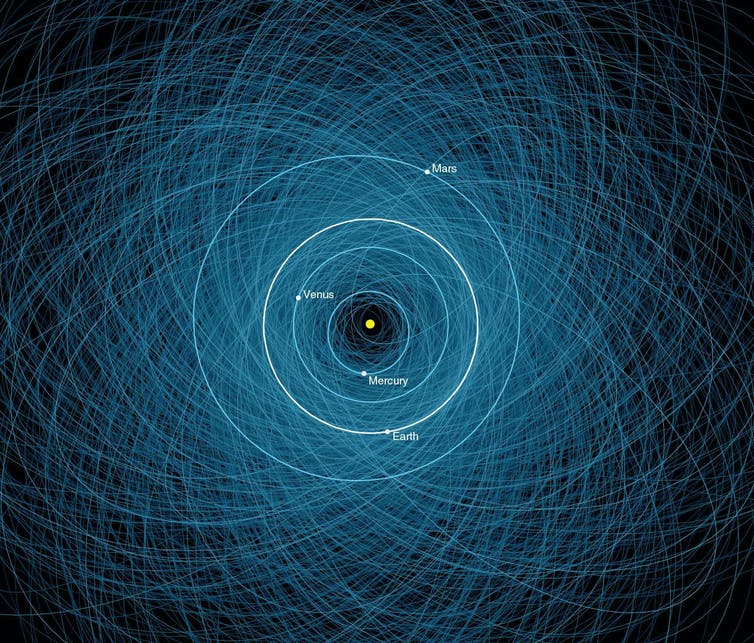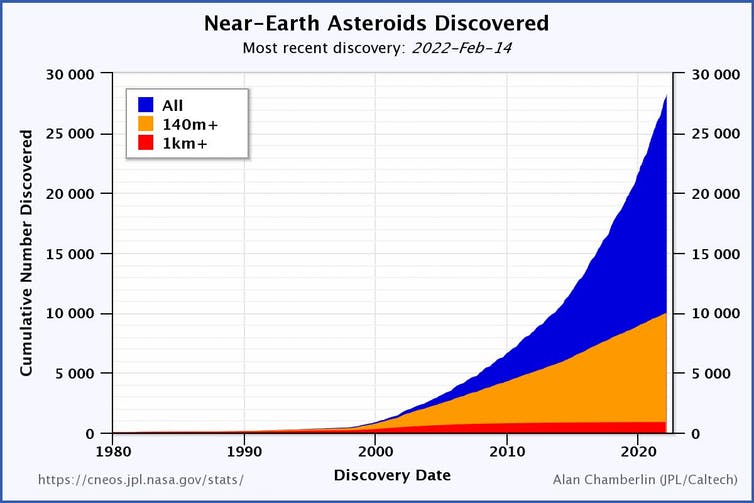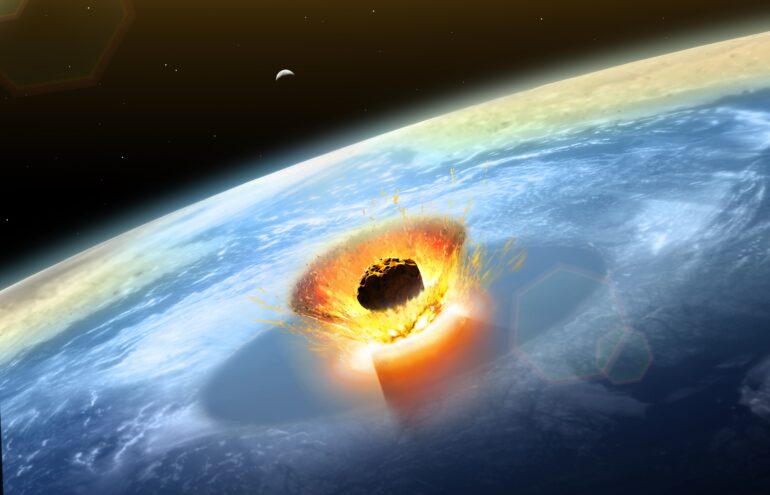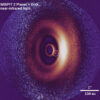The Earth exists in a dangerous environment. Cosmic bodies, like asteroids and comets, are constantly zooming through space and often crash into our planet. Most of these are too small to pose a threat, but some can be cause for concern.
As a scholar who studies space and international security, it is my job to ask what the likelihood of an object crashing into the planet really is – and whether governments are spending enough money to prevent such an event.
To find the answers to these questions, one has to know what near-Earth objects are out there. To date, NASA has tracked only an estimated 40% of the bigger ones. Surprise asteroids have visited Earth in the past and will undoubtedly do so in the future. When they do appear, how prepared will humanity be?

The orbits of thousands of asteroids (in blue) cross paths with the orbits of planets (in white), including Earth’s.
NASA/JPL
The threat from asteroids and comets
Millions of objects of various sizes orbit the Sun. Near-Earth objects include asteroids and comets whose orbits will bring them within 120 million miles (193 million kilometers) of the Sun.
Astronomers consider a near-Earth object a threat if it will come within 4.6 million miles (7.4 million km) of the planet and is at least 460 feet (140 meters) in diameter. If a celestial body of this size crashed into Earth, it could destroy an entire city and cause extreme regional devastation. Larger objects – 0.6 miles (1 km) or more – could have global effects and even cause mass extinctions.
The most famous and destructive impact took place 65 million years ago when a 6-mile (10-km) diameter asteroid crashed into what is now the Yucatán Peninsula. It wiped out most plant and animal species on Earth, including the dinosaurs.
But smaller objects can also cause significant damage. In 1908, an approximately 164-foot (50-meter) celestial body exploded over the Tunguska river in Siberia. It leveled more than 80 million trees over 830 square miles (2,100 square km). In 2013, an asteroid only 65 feet (20 meters) across burst in the atmosphere 20 miles (32 km) above Chelyabinsk, Russia. It released the equivalent of 30 Hiroshima bombs worth of energy, injured over 1,100 people and caused US$33 million in damage.
The next asteroid of substantial size to potentially hit Earth is asteroid 2005 ED224. When the 164-foot (50-meter) asteroid passes by on March 11, 2023, there is roughly a 1 in 500,000 chance of impact.

NASA has been steadily finding and tracking near-Earth objects since the 1990s.
NASA/JPL-Caltech, CC BY
Watching the skies
While the chances of a larger cosmic body impacting Earth are small, the devastation would be enormous.
Congress recognized this threat, and in the 1998 Spaceguard Survey, it tasked NASA to find and track 90% of near-Earth objects 0.6 miles (1 km) across or bigger within 10 years. NASA surpassed the 90% goal in 2011….



